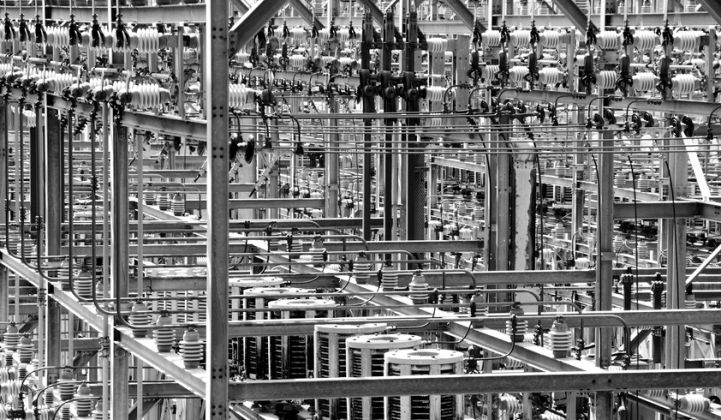The reliability of the electric grid could be compromised if the U.S. Environmental Protection Agency’s proposed regulations to cut carbon dioxide emissions to 30 percent below 2005 levels by 2030 is implemented as written.
That is the conclusion of various independent system operators, as well as the U.S. National Electric Reliability Corporation (NERC), which released an initial report that found reliability could be threatened based on the EPA’s building blocks for achieving the carbon reductions.
The report is hardly the last word; NERC noted that there would be more detailed analyses to come. But before more studies are done by NERC, the Advanced Energy Economy commissioned The Brattle Group to do an analysis of the NERC report.
“We find that the concerns raised by NERC about potential reliability issues arising from compliance with proposed carbon emissions standards are largely overstated,” said Jurgen Weiss, senior researcher and lead author of The Brattle Group's report, in a statement. Brattle and NERC are only two voices; another study by the Analysis Group was released this week, and there will be many more assessments to come.
The conclusions diverge because each group is looking at the four building blocks of the EPA from a different perspective. NERC necessarily examines the issue from a bulk power delivery standpoint, while The Brattle Group stepped back and included market factors that are driving changes in the energy system.
“NERC is doing its job and looking at reliability issues,” said Lauren Lee Azar, former commissioner for Wisconsin Public Service Commission and DOE official. “I do think it’s a little too myopic in how it’s evaluating the EPA draft rule.”
The changing landscape of fossil fuels
The first building block is the heat rate improvement of coal units. NERC pointed to many valid technical issues that could make it difficult for many coal plants to operate 6 percent more efficiently, the level needed to achieve the EPA target.
Brattle, however, took a step back and looked at fleet efficiency and found that a nearly 2 percent heat-rate improvement will come if approximately 50 gigawatts of coal plants are retired due to the implementation of the Mercury Air Toxicity Standards rule from the EPA, which will go into effect before the Clean Power Plan.
If approximately 100 gigawatts of coal is retired, that figure would rise above 3 percent -- which would already be halfway to the EPA target without any further retrofits or retirements due to the rule. The U.S. Energy Information Administration has estimated 60 gigawatts of coal will retire by the end of 2016.
NERC also took issue with the second building block, which calls for coal to be replaced with natural gas. There are gas constraints in some regions, although some of those constraints are only during extreme events, such as the polar vortex. Many markets, such as PJM, are also working on shoring up reliability during events of gas shortages.
Clean energy and efficiency
The groups also came to opposite findings on the role of non-hydro renewable energy and energy efficiency.
NERC took issue with how the EPA calculated renewable targets for each region, because it does not allow for hydropower, even though many state renewable portfolio standards include it. There are important issues to tease out, but NERC also did not consider distributed generation or consider the ways that utilities in many states are already handling increasing levels of intermittent renewable generation.
“NERC really looked at the macro level to see how that model is being disrupted [by the Clean Power Plan] and whether that disruption can be accommodated without looking at the underlying load profiles and what’s happening with those based on new technology,” said Jon Wellinghoff, former FERC chairman. “Planners at the regional level have very little visibility of the distribution level -- and that has to change.”
Wellinghoff has called for distribution markets similar to the markets at the regional transmission level.
The lack of visibility and accounting for changes in demand, primarily through efficiency, was another criticism from the NERC report. NERC looked at utility energy efficiency plans and questioned the ability of some states to meet the EPA targets. Estimating the potential of energy efficiency is a messy business, and the regulations do not simplify it.
But Brattle took a market perspective, noting that about half of energy efficiency spending is outside of utility programs. The shortfalls for efficiency that NERC found could be more than made up by other forces, such as the increased adoption of LEDs and energy benchmarking rules.
Lauren Azar added that utilities already have various tools in their toolbox to maintain reliability, such as efficiency and demand response. “There are many more tools,” she said. “It’s a very exciting time to be in this industry.”
Not only do the utilities and system operators have a toolkit of options to strengthen and maintain reliability, but she added that the federal government also has the authority to ensure the grid is operational, including exceptions for particular plants.
The hard work is just beginning. Azar noted that most states realize that the regional approach is the only way to meet these targets, but "they don’t know how to do this yet.” There are plenty of methodologies to ensure reliability, but it will not be a simple task for each state to tease out.
“The government isn’t going to jeopardize electric reliability in the U.S. -- period,” said Azar.



